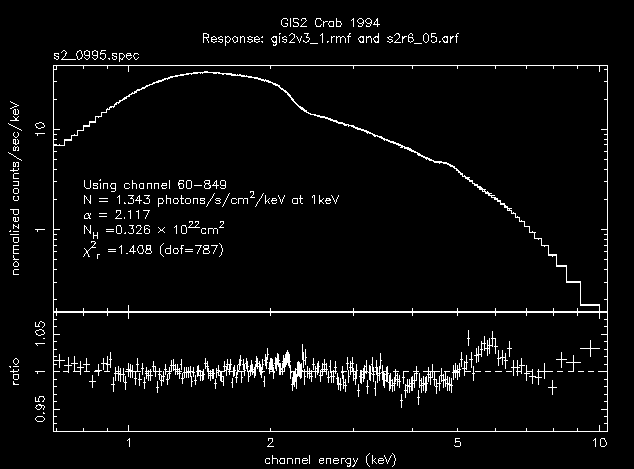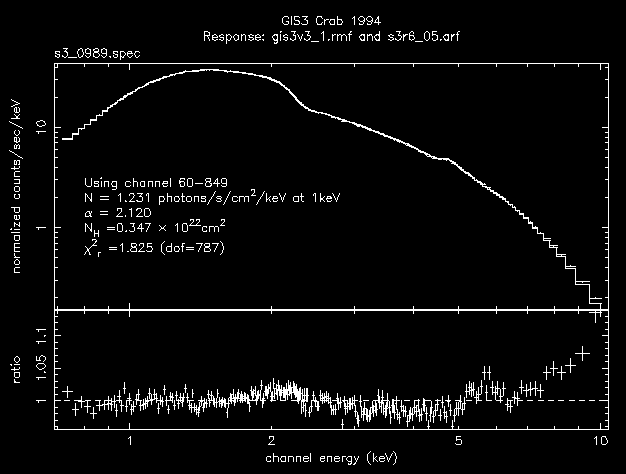GIS spectral calibration with the Crab Nebula in 1994 (Jan. 1995)
This document has become obsolete due to the release of the new XRT responses (xrt_ea_v2_0.fits and xrt_psf_v2_0.fits) and ascaarf v2.62 in July 1996. Please find the article in which the new and old ARFs are compared applying to the GIS Crab spectra.
Soon after the launch of ASCA, GIS/XRT was calibrated observing the Crab Nebula with many different observational modes/pointings, but the exposure time for each mode/pointing was relatively short (several hundreds seconds). The GIS and XRT responses thus determined are good enough in most cases. However, it was soon realized that bright source data with moderate exposure time (about a day) can have much better statistics than those Crab calibration data, and thus Crab observations with long enough exposure are necessary.
The Crab Nebula was observed again on 1994 September 27 for about 60 ksec and on October 4 for 40 ksec, and energy spectra with very high statistics were obtained.
Below is the results of model fitting with the current response functions, gis2v3_1.rmf and gis3v3_1.rmf (postscript files are available for GIS2 and GIS3). (CAUTION: Deadtime correction is not done in these spectra, so the normalization is not correct. Live time fractions are 0.166 and 0.151 for GIS2 and GIS3 respectively, so the correct normalization will be obtained by dividing these numbers.)


As you can see there is a deviation from a power-law function above 5 keV. These results indicate current limit of the GIS/XRT response. You can make sure the fitting results by obtaining the spectra and ARFs, as well as RMFs ( gis2v3_1.rmf and gis3v3_1.rmf ), used in this fitting.
The response has not been updated yet, and the deviation is not solved at the time of writing this document (January 1995). The GIS/XRT team is diligently working to improve the response, and the new response functions will be released soon.
If you have any questions concerning ASCA, visit our Feedback form.

